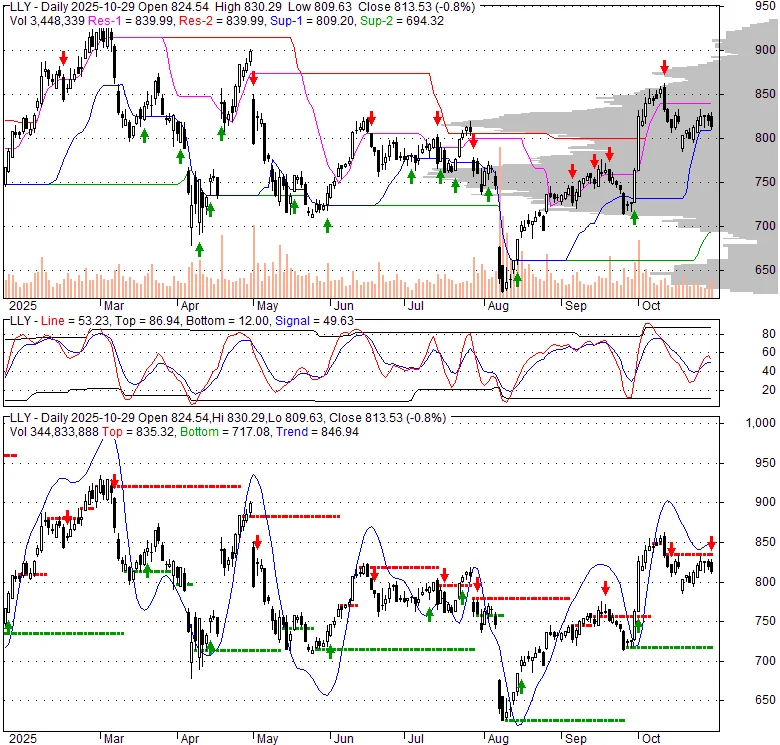Let’s talk about moments of ignition.
For weeks, the financial world was holding its breath, staring at Eli Lilly. The question buzzing around every terminal and trading desk was simple: Could they do it again? After a meteoric rise, the narrative heading into their October 30th earnings report was one of cautious skepticism. An article just days before asked, Should You Buy Eli Lilly Stock Before Oct. 30? and noted that the "sizzle has fizzled so far in 2025." Wall Street expected growth, sure, but the stock’s recent performance had been strangely disconnected from its own good news, sometimes falling after a big beat and rising after a miss.
It felt like watching a massive, gleaming rocket on the launchpad. We all knew the science was revolutionary, the engineering was sound, and the fuel tanks—in this case, the blockbuster drugs Mounjaro and Zepbound—were full to bursting. But there's always that moment of doubt before launch. Will the market's complex machinery ignite, or will it sputter?
Then, on October 30th, the countdown hit zero. The headlines didn't just say "beat." They screamed it. Eli Lilly blows past estimates, hikes guidance as Zepbound and Mounjaro sales soar. This wasn't a sputter. This was ignition. A full-throated roar of financial and scientific validation that echoed far beyond Wall Street.
When I saw the final numbers and the guidance hike, I honestly just leaned back in my chair. This is it. This is the kind of moment that validates decades of painstaking research, the kind of breakthrough that reminds me why I believe so deeply in the power of science to change human lives.
This Isn't About a Stock, It's About a Software Update for Humanity
To see Eli Lilly’s success as just a story about a pharma stock is like looking at the first iPhone and calling it a decent phone. It completely misses the paradigm shift that’s unfolding right in front of us. What we are witnessing is the commercial validation of a new class of medicine that is fundamentally changing our relationship with our own biology.
The engine driving this $770 billion company isn't just clever marketing; it's a profound scientific leap. These drugs, Mounjaro and Zepbound, are GLP-1 receptor agonists—in simpler terms, they mimic hormones in our gut that regulate appetite and blood sugar, essentially telling our brain and body that we're full and to process energy more efficiently. This isn't just another diet pill. Think of it as a software update for our metabolic hardware, patching a system that, for millions of people, has been running on buggy code for years.

This is why the revenue numbers are so staggering, jumping over 40% in a year to a predicted $16 billion for the quarter. That figure isn't just a number on a spreadsheet; it's a proxy for demand. It represents a massive, global population that has been struggling with obesity and type 2 diabetes, conditions that were long seen as intractable battles of willpower rather than the complex biological functions they truly are. We are finally treating the root cause, not just the symptoms.
And that's the Big Idea here. This isn't just about one company's balance sheet, it's about a fundamental rewiring of our approach to metabolic health, a shift so profound that its ripples will be felt for decades across healthcare, insurance, and even the food industry. We're at the very beginning of a new era. This moment for GLP-1s could be to chronic metabolic disease what penicillin was to infectious disease a century ago—a tool so effective it reshapes the entire landscape of human health.
The Dawn of Proactive Medicine
For so long, our medical system has been reactive. We wait for a crisis—a heart attack, a diabetes diagnosis, organ failure—and then we scramble to manage the fallout. The success of drugs like Mounjaro and Zepbound heralds the dawn of something far more powerful: proactive, precision-based medicine on a massive scale.
Imagine a future where we don't just treat the downstream effects of obesity, like heart disease and kidney failure, but we prevent them from ever taking hold. Imagine the trillions of dollars and, more importantly, the immeasurable human suffering that could be saved. This is what that soaring stock price truly represents. It’s the market pricing in a future with fewer hospital beds filled by patients with preventable chronic conditions.
Of course, with great power comes immense responsibility. This breakthrough forces us to ask some hard questions. How do we ensure equitable access to these transformative but expensive therapies? What are the long-term societal implications of a medical tool that could reshape public health so dramatically? These aren't minor details; they are the central ethical challenges of this new chapter. We can't let this revolution only be for the wealthy. We have a moral obligation to figure out how this software update gets rolled out to everyone who needs it.
But what happens when a pharmaceutical innovation becomes so powerful it starts to bend the curve of national health statistics? What new frontiers in human potential open up when we can medically address one of the biggest drivers of chronic illness? The "fizzled sizzle" from before the launch is now a distant memory. The rocket is in the air, and its trajectory is pointing somewhere we've never been before.
A New Baseline for Biology
Forget the quarterly earnings cycle. What we just witnessed wasn't a financial report; it was a historical marker. Eli Lilly’s success is the sound of a scientific dam breaking, unleashing a wave that will redefine medicine for the 21st century. We have cracked a fundamental piece of the human metabolic code, and the world will never be the same. This isn't just a win for a company; it's a win for humanity. And it's just getting started.
